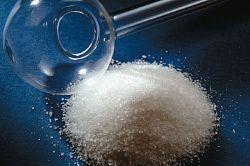Health and safety legislation requires employers to take all practical steps to make the workplace safe and prevent accidents. The majority of employers today accept their duty of care to help employees, an increasingly rare resource, remain physically and emotionally healthy. A drug and alcohol detection and support programme in the workplace can make a huge difference, not only to safety at work, but also to society as a whole. Make no mistake, drug and alcohol abuse is a significant problem in New Zealand. The Institute of Environmental Science and Research Limited (ESR), a Wellington-based Crown Research Institute that provides specialist science solutions related to public health, environmental health and forensic science, estimates around six to ten percent of any segment of the New Zealand population is alcohol or drug dependent. ESR’s Workplace Drug Testing (WDT) programme manager Shelli Turner says since, according to the figures, more than 70 percent of drug abusers have jobs, they could be putting themselves or others at risk in the work place. “Research results show employees who come to work with alcohol and performance-impairing drugs in their system have a high risk of causing an accident or injury to themselves, their co-workers or the general public. In addition, their overall job performance is adversely affected. “Research also indicates the most effective method to eliminate the effect of drug and alcohol abuse in the workplace is to introduce a comprehensive drug and alcohol-free workplace programme. And at ESR we believe ‘comprehensive’ means our WDT programme must be both legally robust and supported by drug education and access to Employee Assistance Programmes,” she says. A number of organisations in New Zealand provide workplace drug and alcohol testing services, but according to Turner only ESR provides a total solution and has specific accreditation for workplace drug and alcohol testing. ESR’s WDT programme is accredited under the International Accreditation New Zealand (IANZ) Laboratory Accreditation. The accreditation is for chemical testing conforming to ISO 17025:1999. It also has accreditation for compliance with Urine Drugs of Abuse Testing related to the AS/NZS 4308:2001 standard. This ESR solution package includes designing policies to deal with alcohol and drugs in the workplace; introducing companies to ESR’s collecting network; doing laboratory-based tests and supplying client companies with a breathalyser suitable for alcohol testing in the workplace; and working with other quality service providers, notably FADE and Instep, to deliver the education, training and rehabilitation components of its WDT programme. Turner says ESR takes care that solutions fit a client company’s specific requirements and culture. “This ensures policies are operationally sound and legally robust, education and training are pitched at the appropriate level, and testing meets the strict requirements of the relevant standard.” Safety sensitive Employers across the globe run drug and alcohol-free workplace programmes. Turner says the past seven years’ uptake of WDT programmes in New Zealand has shown steady growth as employers, especially those with ‘safety sensitive’ type jobs, become more concerned about fulfilling their obligations under the Health and Safety in Employment Act. Safety-sensitive jobs are those that involve the health, safety and, sometimes, the lives of the employees, their fellow workers and members of the general public. These employers include companies in the aluminium and steel; construction and engineering; dairy; defence; fishing and shipping; forestry; manufacturing; meat and poultry, mining; oil, power and energy; recruitment agency; roading; tourism; and transportation sectors. “The Act directs employers to take ‘all practicable steps’ to ensure that the working environment is safe, by identifying and minimising the effects of hazards. The Amendment to the Health and Safety in Employment Act 2003 specifically lists drugs and alcohol as a potential hazard,” Turner says. “Our WDT programme goals are simple – a safe workplace and a healthy, productive workforce. The programme identifies ‘at risk’ workers whose use of potentially impairing drugs would usually go undetected, and provides an opportunity for early intervention to prevent accidents, injury, or dependence.” Test menu ESR’s standard test menu includes tests for amphetamines, benzodiazepines, cannabinoids, cocaine, and opiates, and can include alcohol. Workplace drug testing can be carried out at several levels. An employer may choose to test job applicants, existing employees or both. For job applicants, the programme may cover all applicants or only applicants who work in safety sensitive positions. For existing employees, all workers may be asked to take part in a programme or the employer may decide to test only those who occupy or wish to transfer to safety sensitive positions. The employer must conduct these tests on a random unannounced basis. To ensure this many companies will outsource the random selection process, another service where ESR can lend a hand. An important application of WDT is post incident testing. Employees involved in significant accidents or incidents are tested immediately to identify whether drugs or alcohol were a factor. The employer may also test an employee if he has a reasonable cause or suspicion of drug or alcohol use, or as part of a rehabilitation programme. It’s a mouthful, but Turner emphasises all these decisions must have regard for privacy and human rights considerations and not victimise employees. To be lawful, workplace drug and alcohol testing in New Zealand must be designed, implemented and conducted in accordance with a number of laws including the Privacy Act 1993, the New Zealand Bill of Rights Act 1990, and the Human Rights Act 1993. It is, however, just as important that a WDT programme is legally robust and the results will stand up in a court of law. This includes issues such as integrity and confidentiality of the test processing and “chain of custody”, that workplace drug and alcohol testing is done with the informed consent of the employees concerned, and that disciplinary action by an employer against an employee who refuses to provide a sample for testing or who returns a positive test result are specified beforehand in work rules or in the operative employment contract. Breathalyser testing Fourteen years in practice, ESR has a proven record of command of all the relevant protocols. Turner says when testing for alcohol, the company prefers to use breathalysers to provide an on-the-spot reading of the level of alcohol in an employee’s system. A medical provider or a manager or supervisor of the employee can conduct this. ESR supplies breathalysers that comply with the prescribed Australian Standard AS 3547-1997 and are suitable for use in the workplace, and can do their calibration. For drugs other than alcohol, ESR’s procedures require the collection and analysis of urine samples, commonly called urinalysis. Turner says provided protocols are followed the results are very accurate and able to withstand legal challenge. ESR has a national network of collecting agents that include medical centres, occupational health nurses and diagnostic laboratories. Collecting agents are trained to follow strict procedures to comply with the requirements of AS/NZS 4308:2001 and give agreement that they will follow the correct procedures for urine collection. ESR provides collecting agents with testing packages that include sample collection kits, chain of custody forms, and special prepaid courier bags for securely transporting the specimens overnight to the ESR Workplace Drug Testing Laboratory in Wellington. Here, highly skilled scientific staff takes the process further. Urinalysis is carried out in two phases in the same laboratory. The first is a screening process that gives either a negative or a presumptive positive result. In the case of the latter, the second phase of testing uses a highly specialised process called Gas Chromatography Mass Spectrometry (GCMS) or Liquid Chromatography Mass Spectrometry (LCMS). This test accurately confirms the presence of the drug or its metabolite as well as the level of the drug in the employee’s urine sample. Cut-off levels are determined for each drug at both the screening and confirmatory phases. GCMS or LCMS are the only processes available that meet international testing standards and provide scientifically conclusive and forensically defensible proof of the presence of the identified drug and or metabolite in the specimen tested. Results are confidential and will only be released to a designated person within a company. It is the employer’s responsibility to manage communication of the result to the employee concerned. Turner says while recent advances in drug testing give much more accurate results, not all advances must be taken at face value. “There are now alternative tests, which do not comply with the current Australian/New Zealand Standard, available in New Zealand. Such tests include “on site” urine tests and laboratories conducting the “screen only” tests. “Oral fluid or saliva drug testing is another alternative that’s available but considerable international research has shown that there are still limitations in the detection of some drugs, and drugs are detected for a much shorter time after use than in urine. “These options may well give the wrong results; the results might not withstand legal challenge and, if not part of a well-designed programme, may be unlawful. It’s also important employees understand these programmes are not draconic, and have a purpose – in many cases helping employees help themselves,” she says. Turner says during the period June 2005 to June 2006, nine percent of all pre-employment screening tests conducted for client companies came back positive compared with seven percent the same period ending June this year. Of the tests that came back positive this year, 70 percent were for cannaboids and ten percent for amphetamines. For random testing, ten percent of tests came back positive this year compared with 15 percent the previous year, while for post accident and reasonable cause testing 19 percent were positive compared with last year’s 21 percent. She says it is possible positive results from testing employees are down due to the impact of policies in workplaces the past few years. However, about 74 percent of all tests done by ESR the past year were pre-employment testing and Turner believes substance abuse in general is increasing. “This will reflect in the workplace – there are many people out there who bring their social habits to work, putting themselves and others at serious risk. “Companies with robust policies and procedures may detect and turn them away, but then they simply resurface elsewhere, possibly at companies without such policies and procedures. There’s a lot of work to be done.” Jenny Baker is an Auckland-based freelance writer.
Towards a safer workplace
General
Sunday, 30 December 2007






